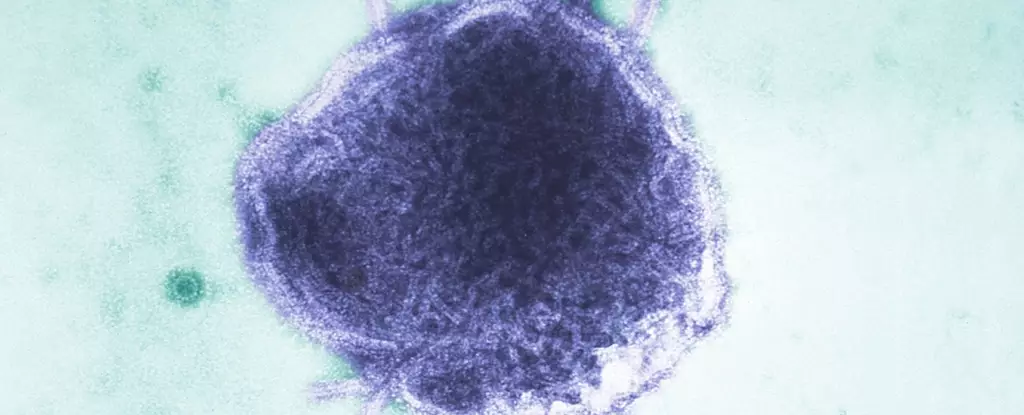Measles, a disease once deemed a relic of the past in the United States, is making a destructive comeback. Recent years have witnessed an unprecedented rise in cases across North and South America, as well as in Europe. The rates have surged alarmingly, with 2025 reporting a staggering elevenfold increase in cases compared to the previous year in the Americas alone. In Europe, incidents reached a peak not seen in the last quarter-century, showcasing that complacency towards vaccination can lead to catastrophic outcomes. The World Health Organization now regards the Americas as high-risk zones for measles, alarming health authorities and raising crucial questions about public health vigilance.
By May 2025, the U.S. reported a shocking 935 cases across 30 states, a massive leap from the previous year’s figures of 285. Texas has emerged as the epicenter of the American outbreak, accounting for a significant portion of these cases. In Canada, a similar narrative unfolds, where over 1,000 instances have been documented, marking a striking increase from the mere 12 cases reported in 2023. Such numbers compel us to confront a crucial conundrum: how did we, as a society, allow a fully preventable disease to regain its foothold?
The Vaccine Paradox: Protection vs. Hesitancy
The cornerstone of minimizing measles cases lies in public vaccination programs, yet recent trends indicate a troubling decline in vaccination rates. Historical data illustrates how effective vaccines can be; prior to 2000, the U.S. contended with millions of cases annually. The implementation of the MMR (measles, mumps, rubella) vaccine initiated in the 1970s massively curbed these numbers. Childhood immunization rates soared to an impressive 96% by the dawn of the 1980s, leading to the auspicious announcement in 2000 that measles had been eliminated from the U.S.
Fast forward to today, and we see a disheartening reversal rooted predominantly in vaccine hesitancy. This behavior has stemmed from misinformation and an overwhelming skepticism towards vaccination, fueled further by the COVID-19 pandemic, which prioritized immediate public health concerns while sidelining ongoing vaccinations. A striking study suggests that around 15 million children in the U.S. could become susceptible to measles within the next five years if the stagnation in vaccination uptake continues. The implications of this finding are grave and remind us that complacency is enemy number one in public health.
A Community Responsibility: The Role of Herd Immunity
Measles is notoriously infectious, with one infected individual capable of transmitting the disease to as many as 18 others. To shield the population effectively, an astounding 95% of individuals must be vaccinated — a measure known as herd immunity. Failure to reach this threshold places entire communities in jeopardy, enabling outbreaks to spread unchecked. Definitions of endemic and epidemic clarify severity; while endemic refers to a disease always present in a region, epidemic signals an alarming increase in its prevalence. Mislabeled as a bygone affliction, measles is now knocking on the door again, thanks to lapses in immunity.
Communication plays a pivotal role in tackling this public health crisis. To combat vaccine-related misinformation and hesitancy, transparent engagement with communities is paramount. Local health authorities and community leaders must take a proactive stance in sharing credible information about vaccine efficacy and safety. Restoring public trust hinges on empathy and consistent efforts to dismantle the pervasive myths surrounding vaccination.
The Path Forward: Revitalizing Immunization Efforts
The trajectory of measles outbreaks in the U.S. and beyond suggests that the path forward involves a vigorous re-engagement with vaccination initiatives. Longitudinal studies predict that unless vaccination rates rise, the U.S. could face up to 850,000 cases in the next 25 years. Such predictions should ignite an urgent call to action. Public health agencies must strategize to ensure that immunization access is universally available, especially for underserved communities.
Moreover, addressing vaccine hesitancy effectively must become integrated into routine public health education. Efforts to educate parents and caregivers about the critical role vaccines play in safeguarding public health cannot be overstated. Without a concerted community effort, the terrifying prospect of reinstating measles as a common infection—a scenario echoed in studies projecting a potential rise of 11 million cases—looms ominously over health authorities.
If the existing tide of skepticism can be turned, bolstering community immunization rates by as little as 5% could significantly attenuate the looming threat of measles, keeping future outbreaks limited in scope. Collaborative efforts between health officials, educators, and families will be essential in reversing the current trajectory and steering us away from an epidemic nightmare. The time to act is now, and the stakes couldn’t be higher.

